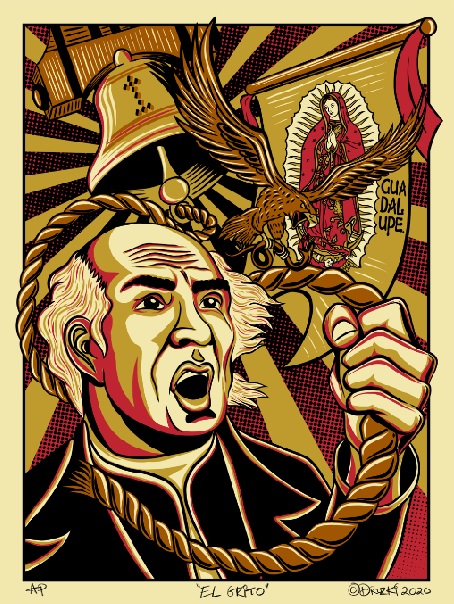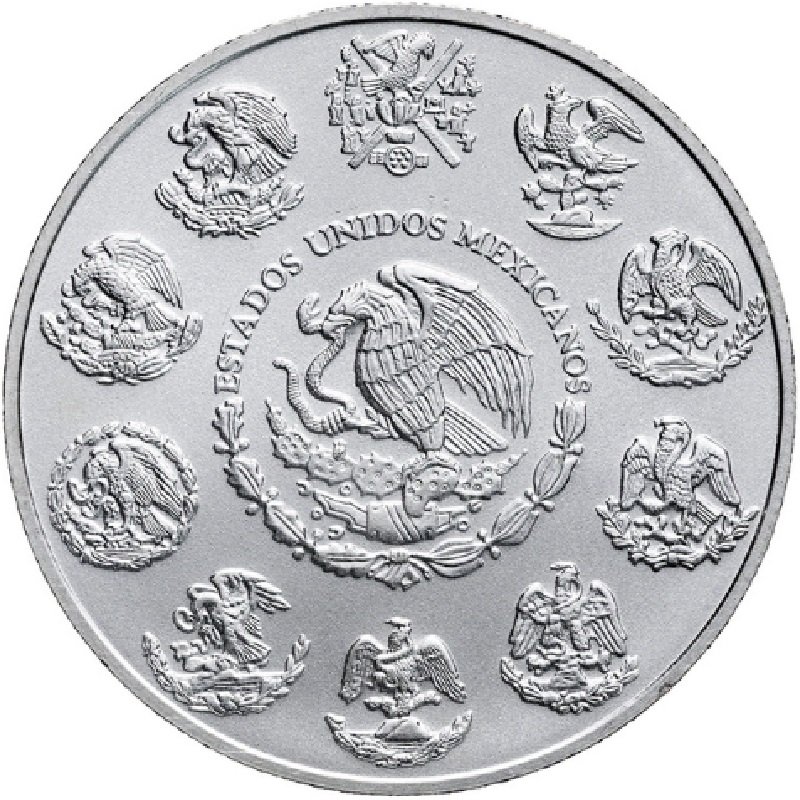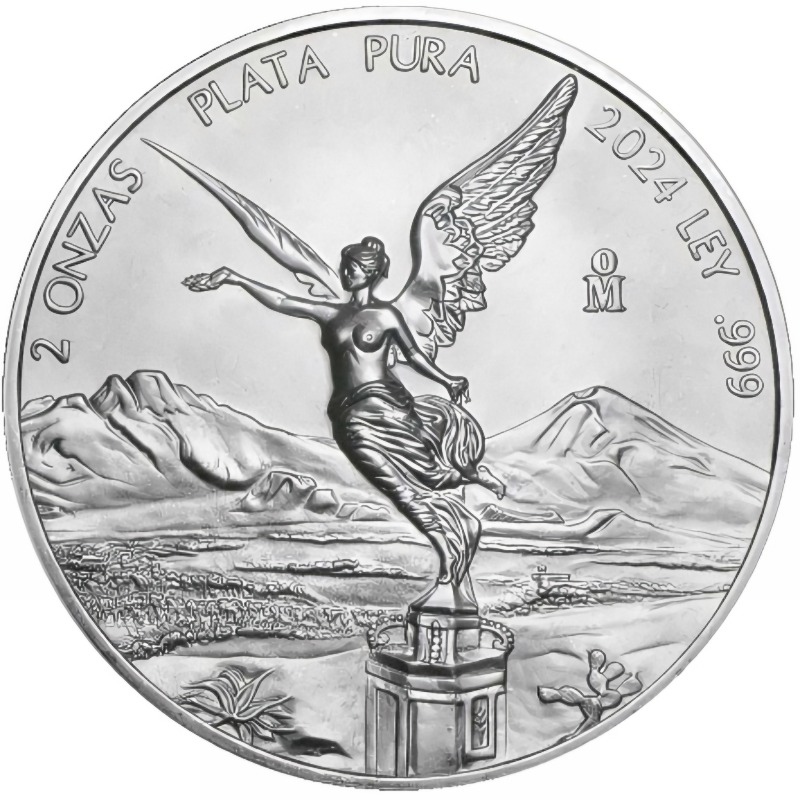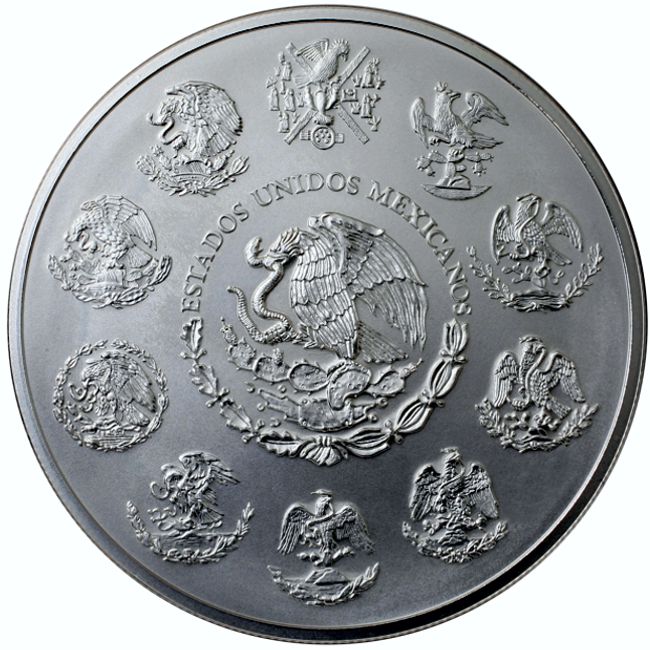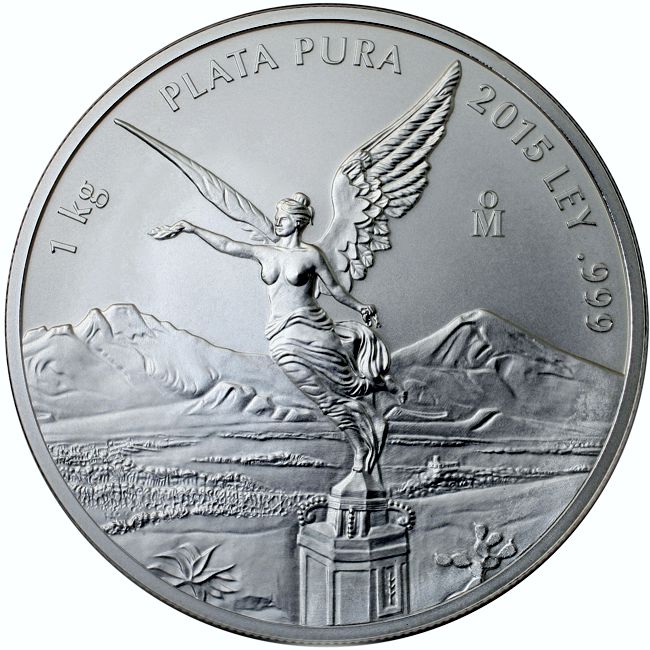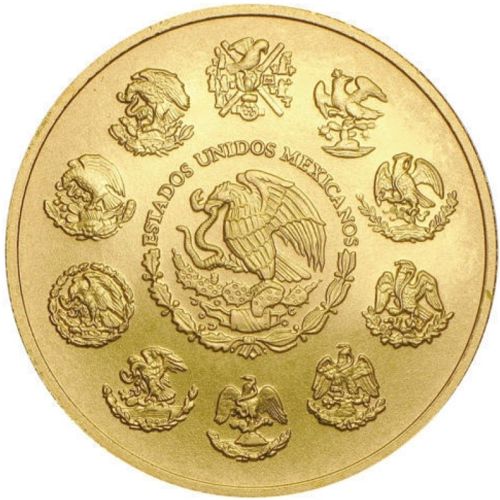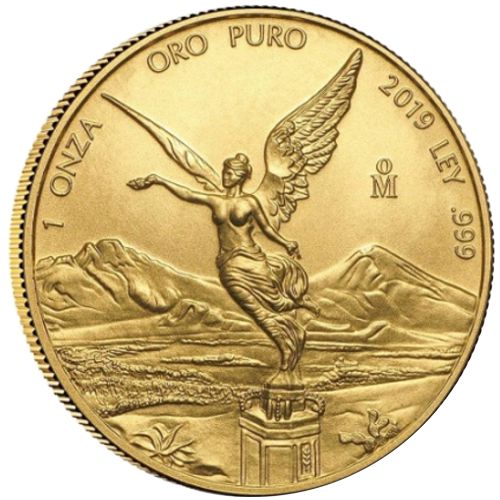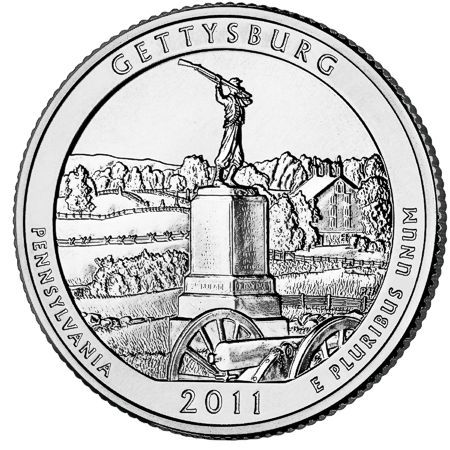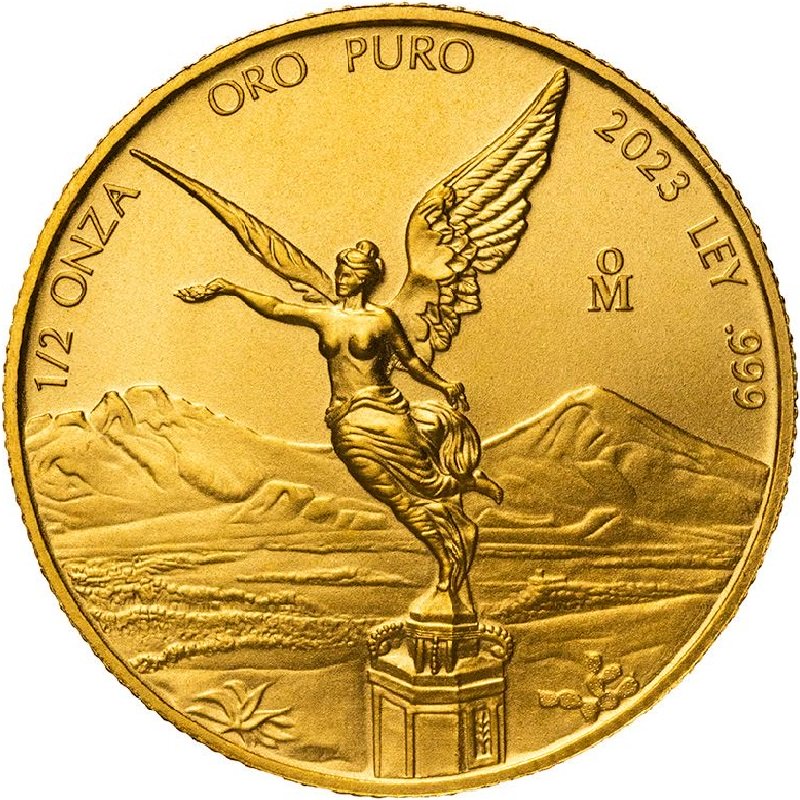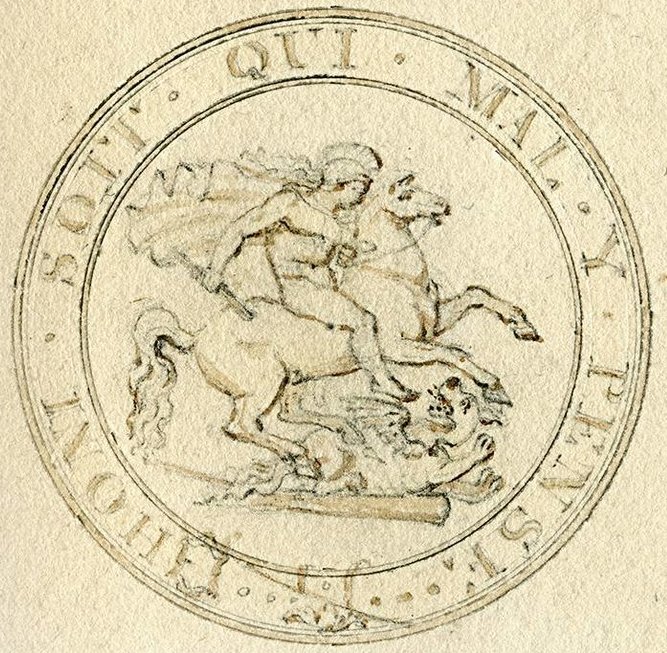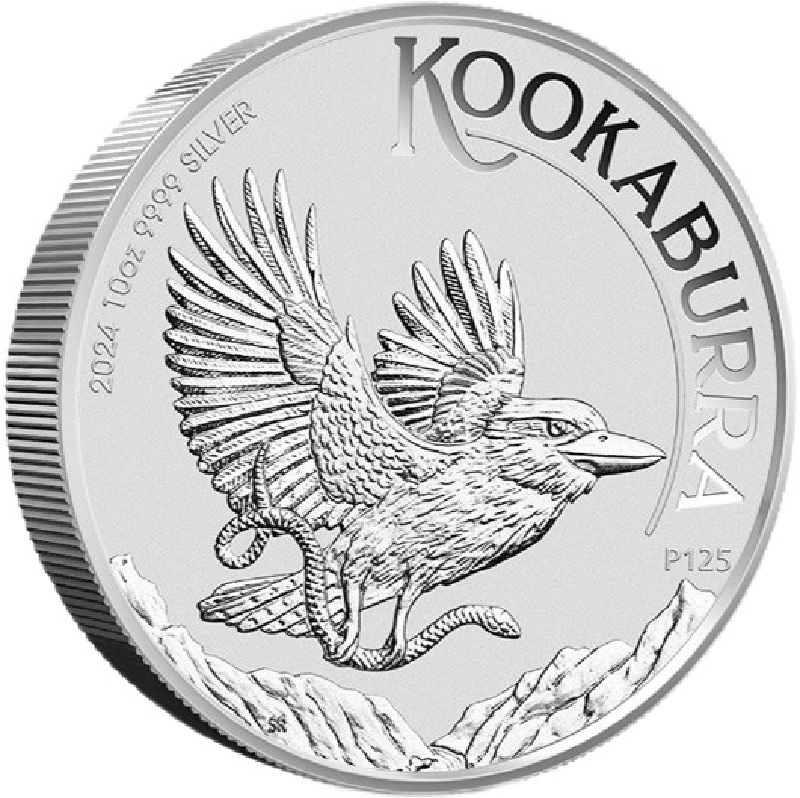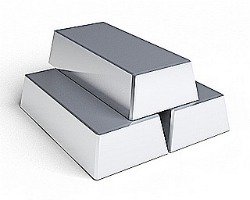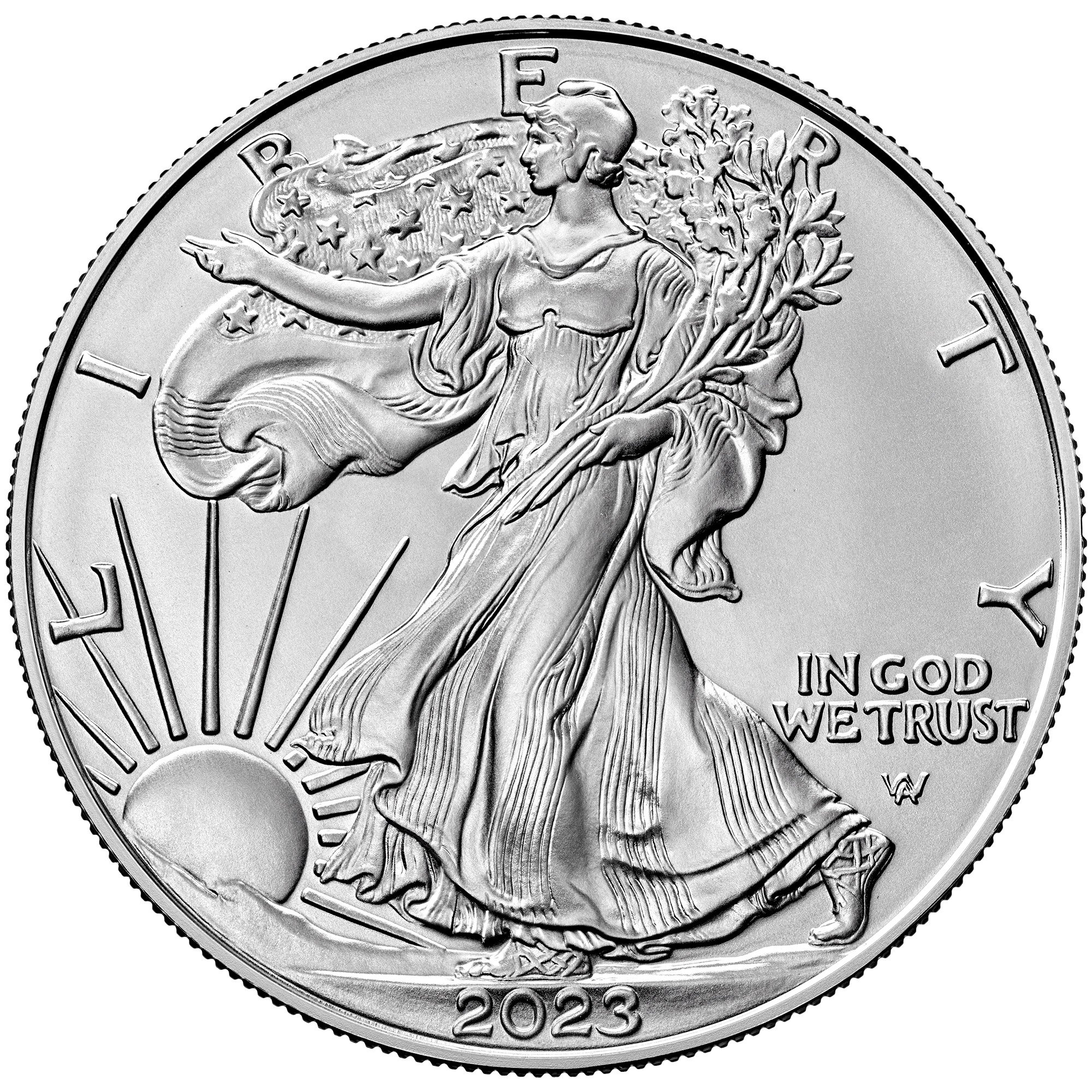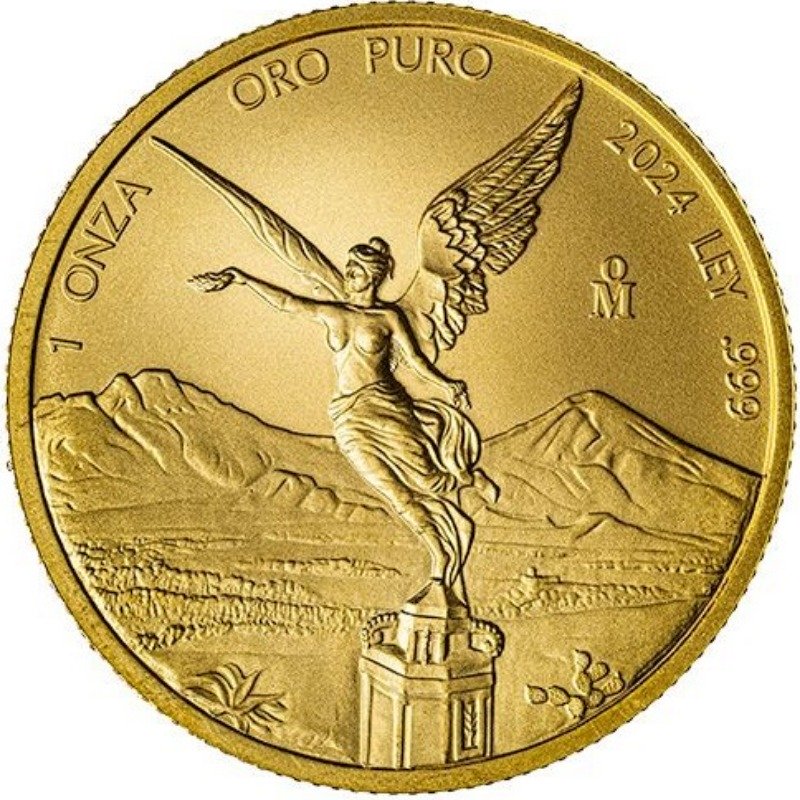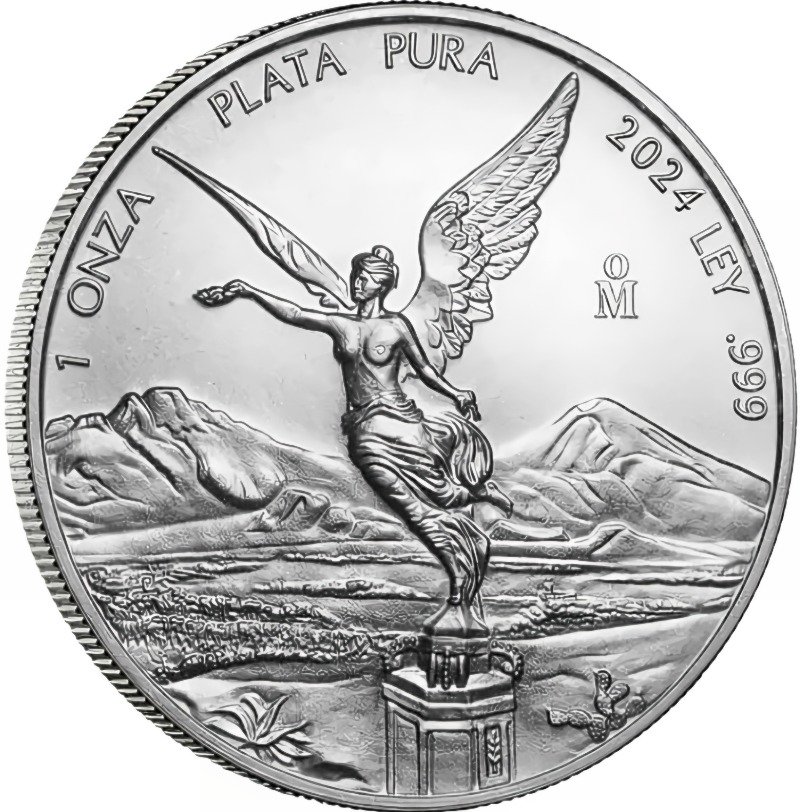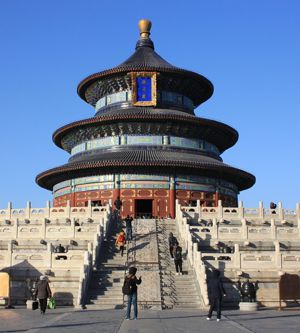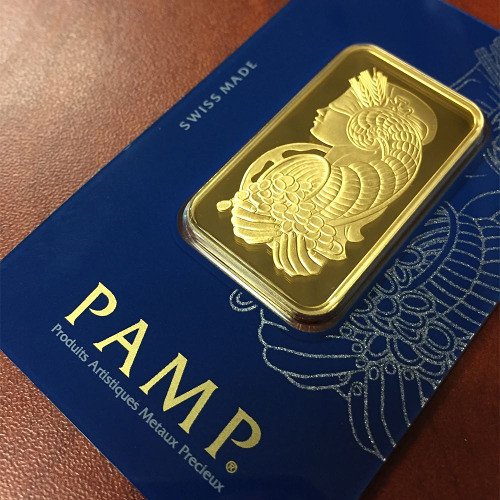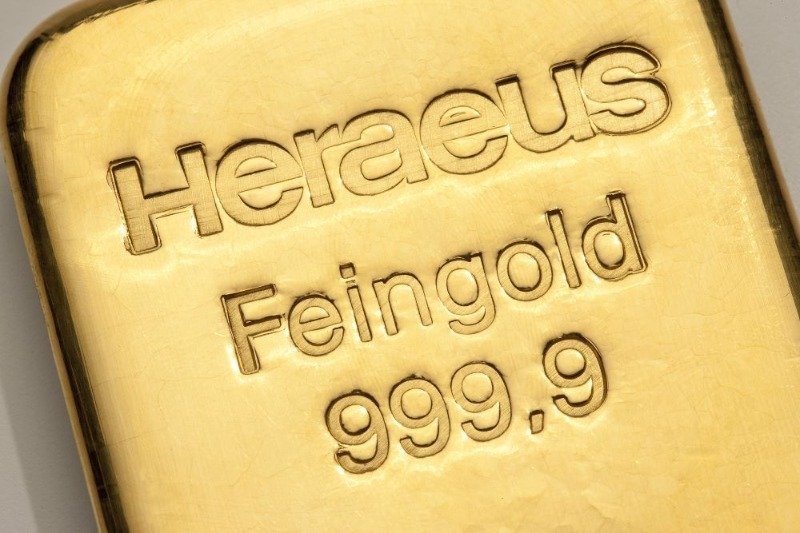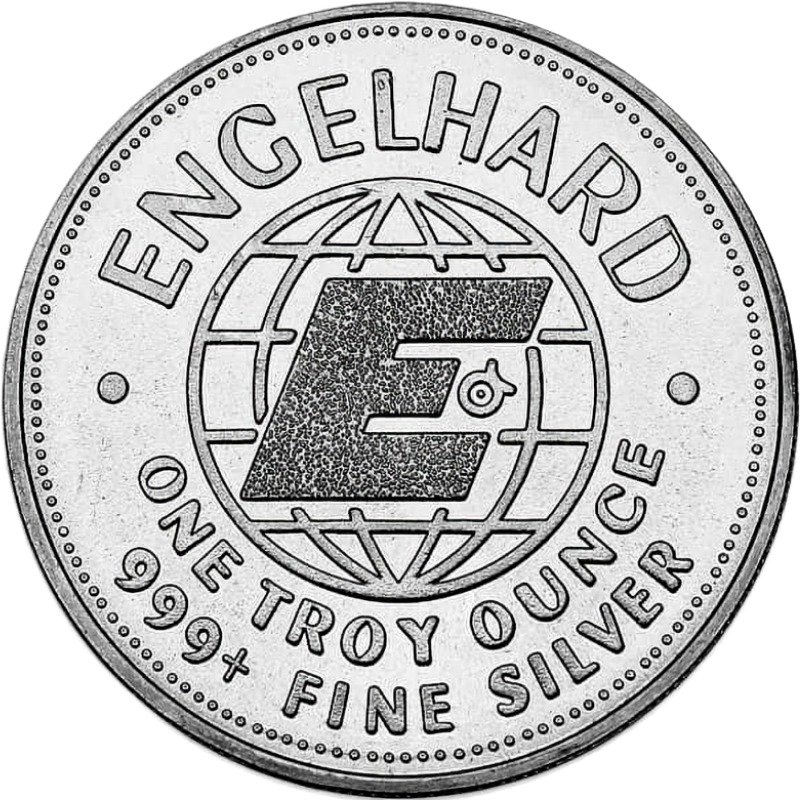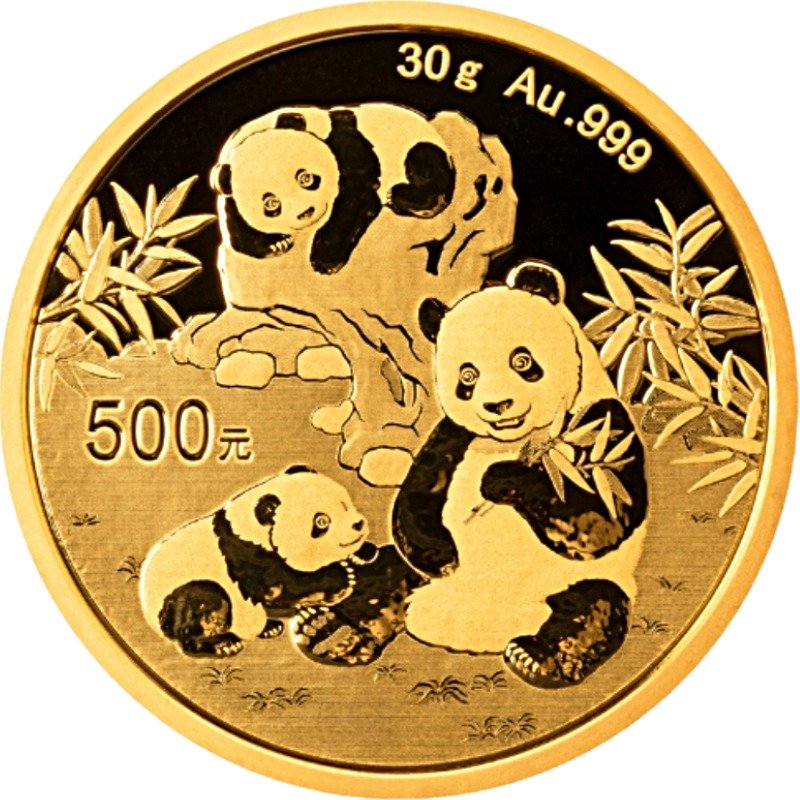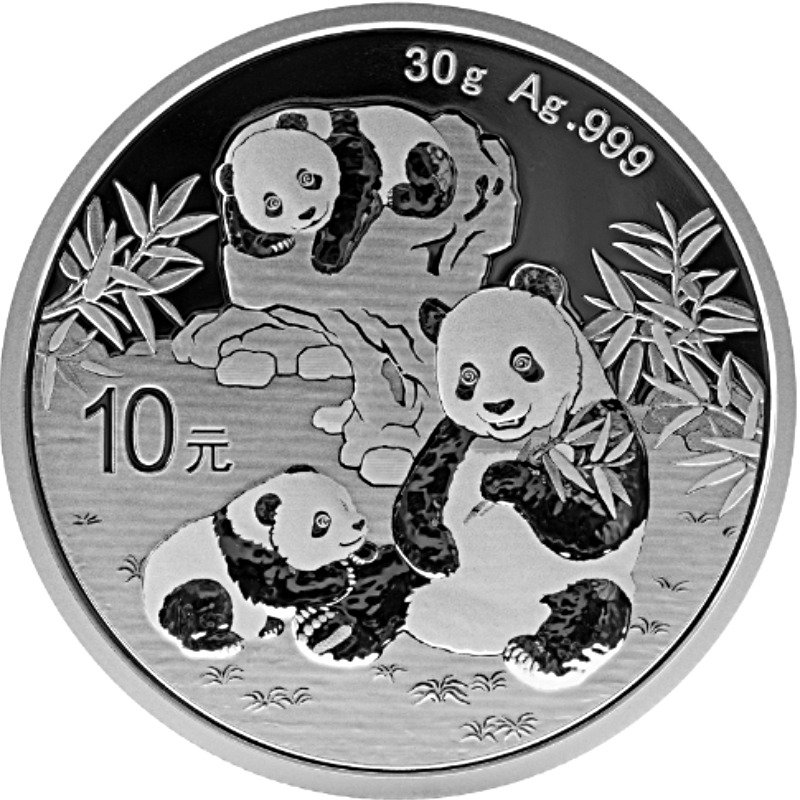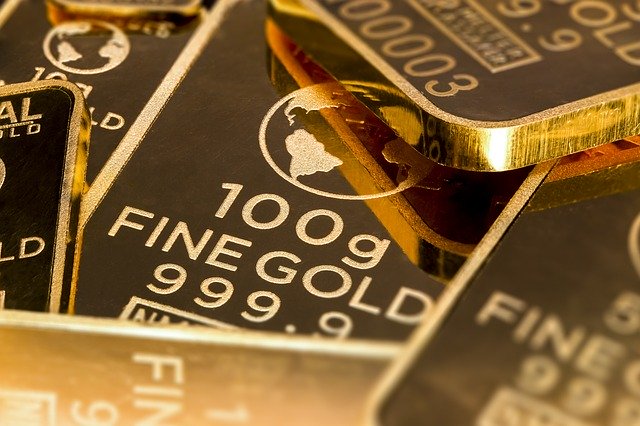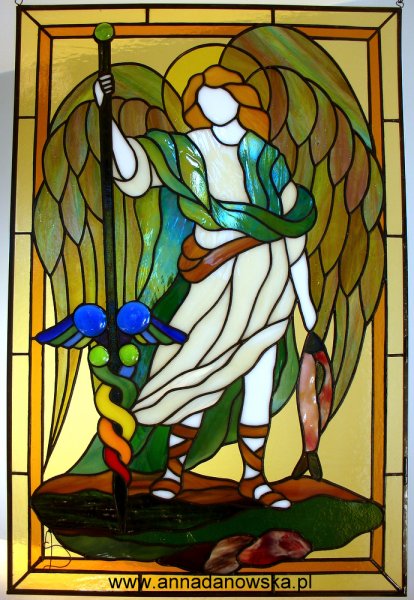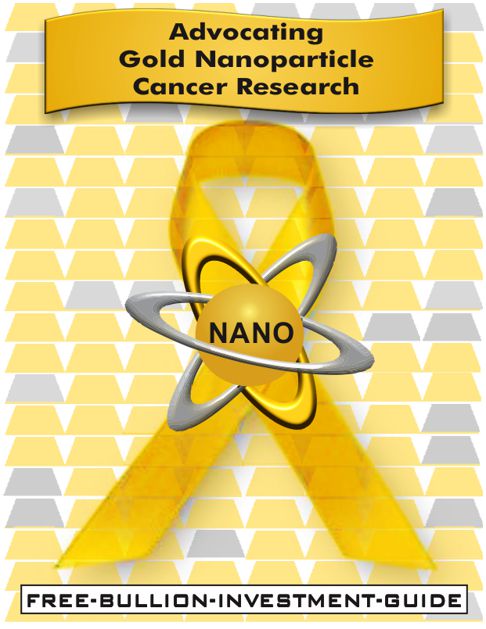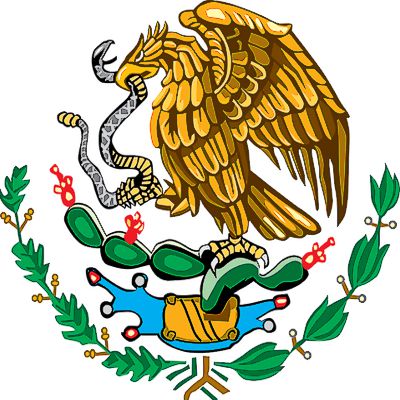Homepage / Bullion Coins: Mexican Libertads / 2 oz. Mexican Silver Libertad
Last Updated on 03/09/2025
2 oz. Mexican Silver
Libertad
In 1996, the Mexican Mint added two sizes, the 2 oz and 5 oz, to the popular silver Libertad series.
The Libertad's design and limited mintage make it one of the most highly sought-after physical bullion silver investments.
Mexican Independence
Libertad means "Freedom" in Spanish.
The Libertad is a symbol of Mexico's Independence; Mexico won its independence from Spain on August 24th, 1821.
However, this is not the date of its celebrated 'Independence Day,' that date is September 16th.
On September 16th, 1810, Miguel Hidalgo y Costilla, a Catholic priest, started the Mexican War of Independence when he gave his famous speech 'Grito de Dolores' or 'Cry of Delores,' named after the town in Guanajuato where it took place.
He rang the bell of his church to get the town's attention, and he called on the people to rise against their brutal Spanish-European occupiers.
Miguel Hidalgo y Costilla is often known as 'The Father of Mexico.'
Note: Outside of Mexico, 'Cinco de Mayo' is frequently misinterpreted as Mexico's Independence Day, which it isn't. "Cinco de Mayo" is Spanish for the "5th of May." In Mexico, that day commemorates the Mexican victory over French forces at the Battle of Puebla on May 5, 1862.
from one of our Reputable Dealers
Design of the
5 oz. Mexican Silver Libertad
Obverse
The center of the obverse side of the 2 oz Mexican Silver Libertad features the National Coat of Arms of Mexico.
The Coat of Arms depicts a Mexican Golden Eagle perched upon a cactus with a snake in its beak, it symbolizes Tenochtitlan, the Aztec Capital, now Mexico City.
The wreath below the eagle is half oak leaves and half laurel leaves.
The laurel leaves represent victory, and the oak leaves commemorate those who have given their lives for Mexico.
Inscriptions:
- ESTADOS UNIDOS MEXICANOS (Mexico's Official Name in Spanish)
Encircling the Outside of the Mexican Coat of Arms are reproductions of various Mexican Coat of Arms used throughout history.
This version of the Mexican Coat of Arms has been used since 1968.
The 2 oz Silver Libertad has a Reeded Edge.
Coin Photo courtesy of Walmart
Reverse
The centerpiece on the reverse side of the 2 oz Mexican Silver Libertad is the "Winged Victory" Angel, as it towers above the volcanoes Popocatépetl and Iztaccihuatl.
Inscriptions:
- 2 ONZAS (2 ounces)
- PLATA PURA (silver pure)
- Year of Issue
- Ley (law)
- .999
- M under an O (mint mark of the Mexican Mint)
The 2 oz. Mexican Silver Libertad is legal tender, but it lacks a face value.
Coin Photo courtesy of Walmart
Free Shipping on Orders $199+ | 5.0 star Customer Reviews
2 oz. Mexican Silver Libertad
Information:
Introduction:.......1996
IRA approved:......Yes
Grade:.................Uncirculated
Face Value:..........No
Silver Content:.....2 Troy oz.
Total Weight:.......62.20 grams
Purity:.................99.9% / 999 per mille
Diameter:............48.05mm
Mint Mark:...........Yes
Edge:..................Reeded
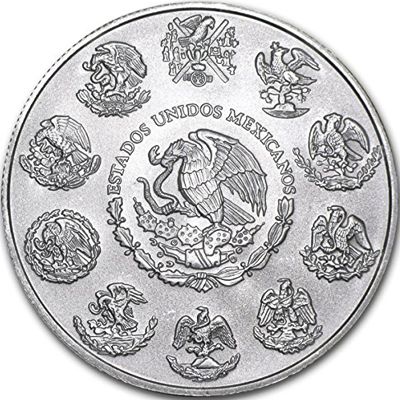

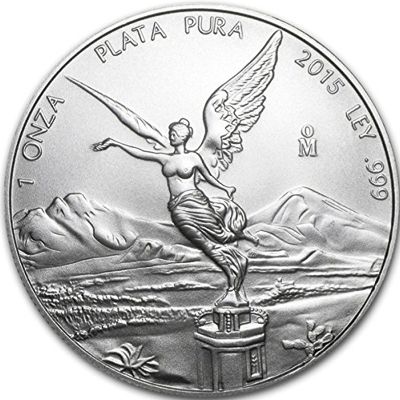
Buy
Mexican Silver Libertad
Bullion Coins
from the Reputable Bullion Dealers below.
|
The Links below will take you directly to the page described. |
Silver Libertad page
Free Shipping on Orders $199+
Silver Libertad page
Free Shipping on Orders $199+
BBB - Customer Reviews
Silver Libertad page
Free Shipping on Orders $199+
Mexico Silver Libertads page
Free Shipping on Orders $199+
America's Superstore offering Precious Metal Coins and Bars from Reputable Bullion Dealers
Mexico Silver Libertads page
1-kilo Silver Libertad
Shipping prices vary by item
Notice
- This site receives a commission when you purchase from the merchants above.
- No Personal Information is Obtained by this guide when you visit or order from any of the merchants above.
- See this guide's Affiliate Disclosure page for more information: here)
2 oz. Mexican Silver Libertad
Mintage Figures
Year Mintage
1996....50,000
1997....15,000
1998....7,000
1999....5,000
2000....9,000
2001....900
2002....10,500
2003....9,500
2004....11,000
2005....5,200
2006....5,800
2007....8,000
2008....17,000
2009....46,000
2010....14,000
2011....14,000
2012....18,600
2013....17,400
2014....9,000
2015....20,100
2016....17,600
2017....8,900
2018....20,400
2019....18,300
2020....5,500
2021....6,500
2022....6,250
2023....30,000
2024....27,000
Free Shipping on Orders $199+ | 5.0 star Customer Reviews
Other Bullion Coins you may like...
|
|
|
|
|
|
Mexican Silver Libertad
Visit the Mexican Bullion page
OR
For Bullion Market News...
|
Support this Guide & Paypal Thank You for Your Support |
|
|
 | |||||
Free Bullion Investment Guide
Keep this Guide Online
& Paypal
Thank You for
Your Support
Search the Guide
| search engine by freefind | advanced |

Daily
Newsletter
Mintages
for
2024
Gold & Silver Mexican Libertad
|
Gold Libertads |
Chinese Gold Coin Group Co.
& Chinese Bullion
2025
Gold & Silver Chinese Panda
|
Silver Panda |
Help Us Expand our Audience by forwarding our link
www.free-bullion-investment-guide.com.
Thank You!
March's

All Articles were Originally Posted on the Homepage
The Story Behind the Mexican Coat of Arms
In the early 1300s, an Aztec tribe
also known as the Mexica tribe, who had no homeland, wandered around the
northern areas of the country, known as Mesoamerica, in search of a
place to build their Empire.
As the legend goes, in 1323, the tribe's leader received a vision in a dream that they were to settle at the place where they saw an eagle with a snake in its beak, while perched at the top of a prickly pear cactus.
Two years later, the dream was fulfilled on a swampy island, in Lake Texcoco.
Scouts for the tribe found the eagle, snake, and cactus in the same fashion that the leader described to them, in his vision.
This is where the tribe settled and built the city of Tenochtitlan, which became the center of the Aztec Empire.
Today, Tenochtitlan is known as Mexico City.
Click Tenochtitlan Links to see a Portrait of Tenochtitlan in a 3-D reconstruction of the capital of the Aztec Empire and more.

ExpressGoldCash - 4.9 star Customer Reviews
